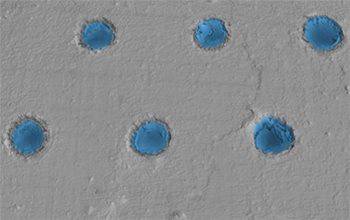
Laser surface texturing 은 재료 표면의 특성이 변경되는 프로세스입니다. 일반적으로 레이저는 재료 표면에 잔물결(ripples) 또는 미세 구조(microstructure)를 생성하여 습윤성(wettability), 마찰 (friction) 및 조명 관리 (light management) 특성에 변화를 주는 데 사용됩니다.
Surface texturing은 나노초에서 펨토초까지 다양한 펄스 길이를 가진 다양한 레이저를 사용하여 수행 할 수 있습니다. 정확한 프로세스를 사용하면 다양한 밀도와 형태의 마이크로 구조 또는 나노 구조 배열로 표면을 수정할 수 있습니다.
일반적으로 응용 분야의 요구 사항에 따라 최대 20 마이크론의 표면 구조를 통해 수백 나노 미터의 표면 잔물결(ripples)이 생성 될 수 있습니다. 금속과 세라믹에서 폴리머와 유리에 이르기까지 많은 재료를 가공 할 수 있습니다.
Specification example of Laser Surface Texturing
|
MINIMUM TRACK WIDTH |
5µm |
|---|---|
|
MAXIMUM MATERIAL THICKNESS |
30µm |
|
MATERIALS |
A wide range of materials from metals and polymers to ceramics and glasses. |
Key Benefits
- Selective area surface modification
- Range of surface structures possible
- No mask required
